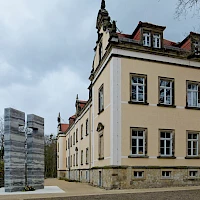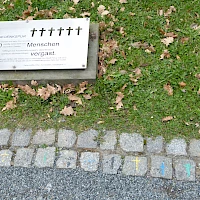Since 1811, one of the first German sanatoriums and nursing homes for mentally ill and handicapped people existed on the Sonnenstein in Pirna, which achieved European fame in the 19th century. This state institution was closed in 1939.
In the spring of 1940, the Nazis established a "euthanasia" institution. From June 1940 to August 1941, 13,720 mainly mentally ill and handicapped people of all ages were murdered in a gas chamber as part of "Aktion T4." In 1941, more than 1,000 additional prisoners from the Sachsenhausen, Buchenwald and Auschwitz concentration camps fell victim to "Special Treatment 14f13."
The memorial, inaugurated in June 2000, consists of the memorial area in the basement and a permanent exhibition in the attic. The exhibition illustrates the history of the sanatorium and the Nazi 'euthanasia' institution, the fates of victims and perpetrators, and how the crimes were dealt with.
Commemorative events and scientific symposia are held annually. Numerous publications and an educational program are available.
Path to the memorial
A system of signposts consisting of 16 panels leads from Pirna train station through the city center up to the Sonnenstein memorial. The signposts are part of the memorial sign "Past is Present". All panels bear a motif of the Sonnenstein fortress, each with a term from the context of the National Socialist "euthanasia" crimes, for example: collective transport, comfort letter, special treatment, bathing room.
Furthermore, a memorial trail of colored crosses connects the town of Pirna with the site of the Nazi crimes. Each cross commemorates a victim.











